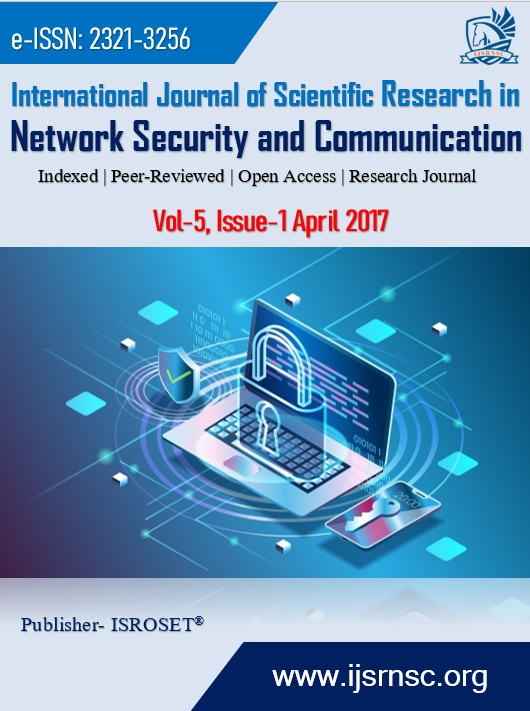Railway Management System using IR sensors and Internet of Things Technology
Keywords:
unmanned gate crossing, GSM modem, GPSAbstract
In Indian railways, accidents are still major concern in terms of safety of people which are caused due to unmanned rail road crossing and unidentified cracks in railway tracks. By looking at such conditions, we need to implement new technology in order to reduce accidents map. The main purpose of this paper is to provide safety at unmanned railway crossing and detection of faulty tracks. Unmanned level crossing is IR sensors base system and crack detection is a dynamics approach which combines the use of GPS (global positioning system) module to collect geographical coordinate of faulty tracks and GSM (global system for mobile communication) modem to send geographical coordinate of location. Here, we have introduced IOT (Internet of Things) which controlled the crack detection system dynamically.
References
AK. Dewangan, M Gupta, P. Patel , “Automation of railway gate control Using Frequency Modulation Technique”, International Journal of Electrical Electronics Engineering, vol.2, Issue.9, pp.288-298, 2012.
TL. Beach, PM. Kinter, “Devlopment and use of GPS Ionospheric Scintillation Monitor”, IEEE Transaction of Geoscience and Remote sensing, vol.39, Issue.5, pp.9180928, 2001.
Arun P, Sabarinath G , Madhukumar S, “Implementation of Zig-bee based train Anti-Coliision and Level crossing protection system for Indian Railway”, International Journal of latest trends in Engineering and Technology, vol,2, issue.1, pp.1-7, 2013.
ACYM. Kottalil, Abhijith S, Ajmal MM, Abhilash LJ, Ajith Bab , “Automatic Railway Gate Control System”, International Journal of Advanced Research in Electrical and Instrumentation Engineering, Vol.3, Issue.2, pp.23-31, 2014.
Takashi Kunifuji, Jun Nishiyam, Hiroyuki Sugagara, Tetsuya Okada ,Yamato Fukuta , Masayuki Mastsumoto, “A Railway Signal Control System by Optical LAN and Networks”, Journal of Networks, Vol. 3, No.7, pp. 8-15,2008.
Burra.Raju ,B.Sreenivas , “Alarm system of Railway Gate Crossing based on GPS and GSM”, International Journal of scientific Engineering and Research, vol.1, issue.1, pp.107-109, 2013.
S. Biswas, RH. Bhuiyan, S.Hoque, R. Hasan, TN. khan, “Pressure sensed Fast Response Anti-Collision system for Automated Railway Gate control”, American Journal of Engineering Research, Vol.2, Issue.11, pp.163-173, 2013.
Selvamraju Somalraju ,Vigneshwar mrunali, Gourav saha, D. Vaidehi, “Robust Railwa Crack Detection Scheme (RRCDS)Using LED-LDR Assembly”, IEEE International Conference.on Networking sensing and control, Vol.6, Issue.3, pp.453-460, 2012.
G. Sivaiah, PK. Rao, "Providing Efficient Driving Directions Using GPS and Driver`s Ability", International Journal of Computer Sciences and Engineering, Vol.2, Issue.9, pp.18-21, 2014.
Qiao Jian-hua, Li Lin-Sheng, Zhang Jing -gang , “Design of Rail surface Crack Detecting system Based on Linear CCD Sensor,” IEEE Conf. on Networking Sensing and Control, Vol.14, No.4, pp.961-970, 2008.
K. Marsus, PM Ilius, M. Hossen, PM Rakibul, “ Programmable Logic Controller Based Automatic Railway gate control and Remote Monitoring System”, Canadian Journal on Electrical and Electronics Engineering, Vol.4, Issue.2, pp.1-8, 2013.
K. Vijayakumar,S.R. Wylie, J.D. Cullen, C.C. Wright, AI. Shamma, “Non-invasive rail track track detection system using Microwave sensor”, Journal of Applied Physics, Vol.9, Issue.11, pp.1743-1749, 2009.
H. Tsunashima, T. Kojima, Y. Mastumoto, T. Mizuma “Condition Monitoring of Railway Track and Driver Using In-service Vehicle”, IET International conference on Railway condition Monitoring, Derby (UK), pp.1-19, 2008.
RJ. Greene, JR. Yates, EA. Patterson , “Crack Detection in rail using infrared methods”, Optical Engineering, Vol.46, Issue.5, 510-513, 2007.
Downloads
Published
How to Cite
Issue
Section
License

This work is licensed under a Creative Commons Attribution 4.0 International License.
Authors contributing to this journal agree to publish their articles under the Creative Commons Attribution 4.0 International License, allowing third parties to share their work (copy, distribute, transmit) and to adapt it, under the condition that the authors are given credit and that in the event of reuse or distribution, the terms of this license are made clear.









